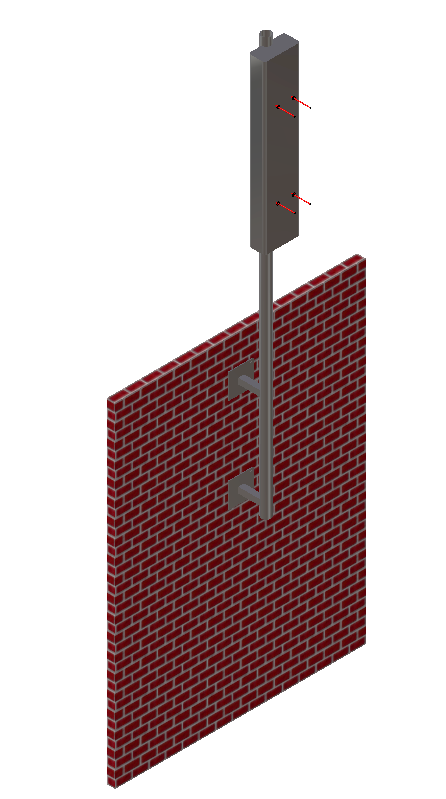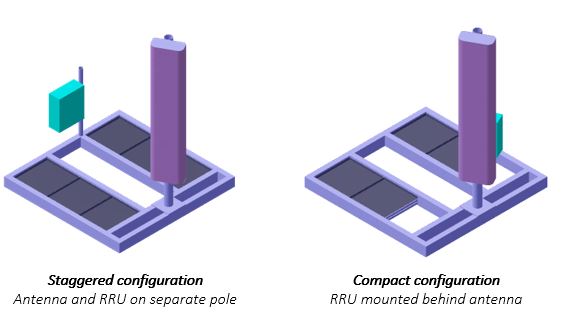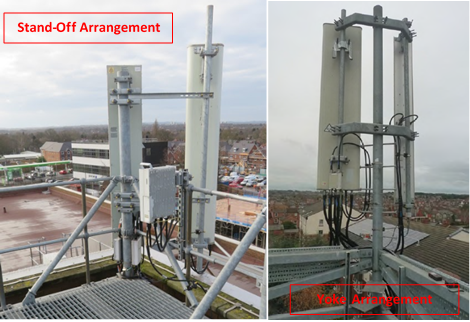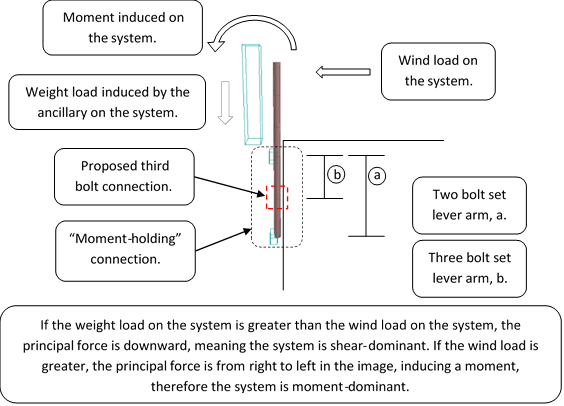Feeder cables can FAIL a lattice tower, through exceeding the structural utilisation capacity, if not arranged thoughtfully. Carefully planned feeder arrangement in a simple system can reduce the utilisation of the lattice tower legs by 15% and reduce the tower brace utilisation by nearly 40%!
Without adequate forethought, a telecommunication system with 16 feeder cables on a tower may be arranged in stacks of 1 or 2. This leads to wind load across eight, or even 16 feeder surface areas.
We investigated the effect of feeder arrangements on tower utilisation. We placed four antennas at the top of an existing 30m square lattice tower, fed by 16 typical sized feeders in a variety of different arrangements. To replicate a common tower arrangement, the structure also included a ladder mounted on one of the tower faces.
What We Found
Our analyses showed the maximum tower utilisation with the feeders stacked in a single row of 16, mounted on one leg, adjacent to the ladder location. Minimum utilisation was from feeders stacked in rows of four, mounted on a leg that is not directly supporting the ladder.
The difference in structural utilisation between these two scenarios was 15% for the tower legs, and 38% for the tower braces!
A surprising find was the structural utilisation from the feeders separated into groups of four, stacked in rows of two, mounted on each leg. The leg and brace utilisation were greater than those in the minimum scenario by 5% and 6% respectively.
Take Away Message
Feeders must be arranged with tower loading in mind. With less loading from feeders, more ancillaries can be placed on the tower, resulting in a more useful AND more financially profitable structure.
Check your existing towers. Check your proposed towers. Think about how the feeders are, or are proposed to be, arranged:
- Are the feeders helping to distribute the loads more evenly throughout the tower?
- Are the feeders stacked in the most efficient manner to reduce wind load on the structure?
KAEG continues to leverage our expertise to maximise the structural potential of your asset. Contact our expert team at: info@ka-engroup.com to learn more and discuss how we can best serve your needs.



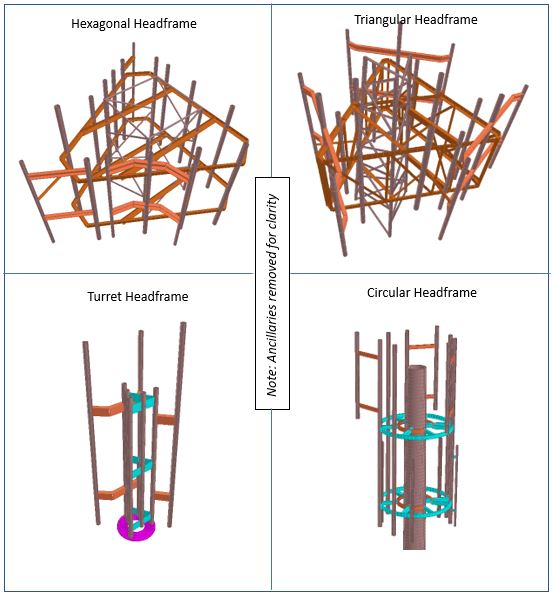
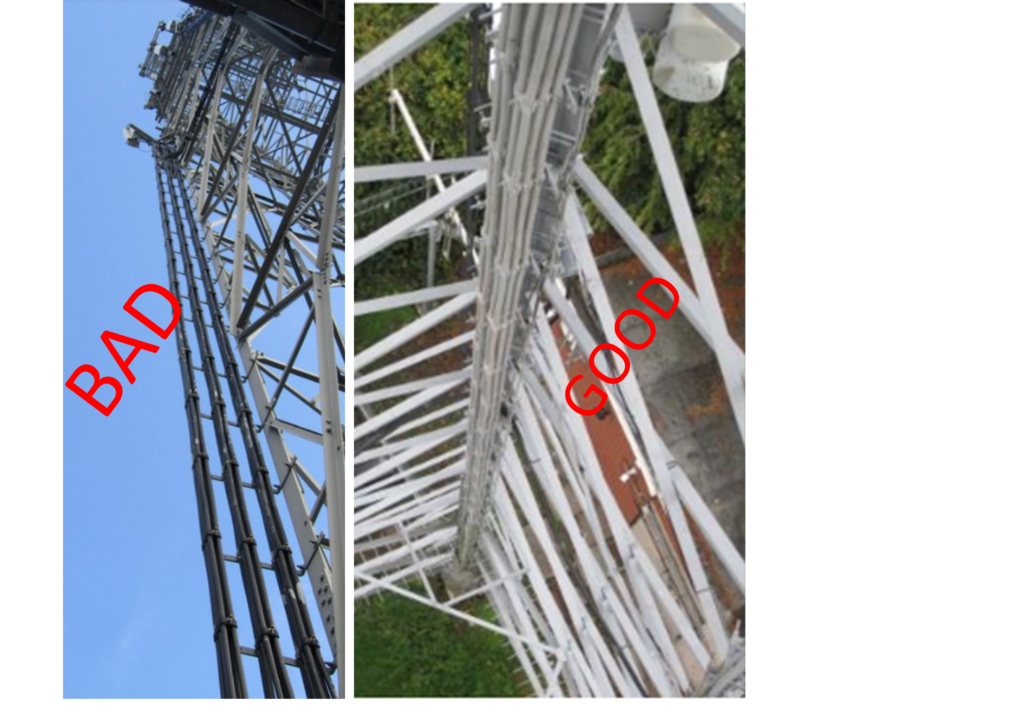
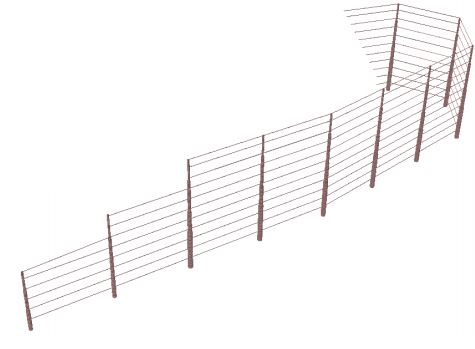

 At KA Engineering Group, we analyse a wide range of structures from monopoles to lattice towers and everything in-between. We recently completed the analysis of an existing 48m tower for the proposed addition of a 2-meter microwave dish.
At KA Engineering Group, we analyse a wide range of structures from monopoles to lattice towers and everything in-between. We recently completed the analysis of an existing 48m tower for the proposed addition of a 2-meter microwave dish.